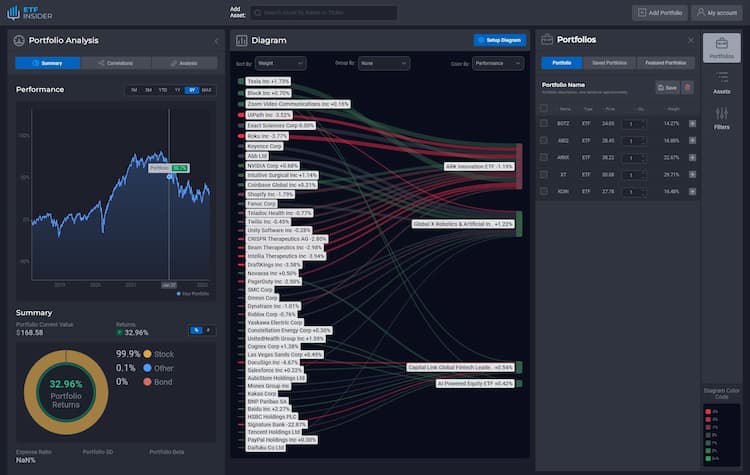![How a Funds Performance is Essentially Just the Sum of its Parts [R]](/blog/_next/image?url=https%3A%2F%2Fstrapi.etfinsider.co%2Fuploads%2FFunds_1_8f03d95d7a.jpg&w=1920&q=75)
How a Funds Performance is Essentially Just the Sum of its Parts [R]
When evaluating a fund's performance, it's easy to get caught up in the overall number at the end of the trading day and lose sight of the fact that it's essentially just the sum of its parts (or individual holdings). In other words, a fund's performance, regardless of the difference in weight methodology, is determined by the performance of the combined individual securities it holds.
Yet, not all are created equal; this is undoubtedly the case with all funds (both passively and actively managed). As shown in the table below, we gathered data for the top 3 indices in the US, which are simultaneously used as a benchmark and gauge of the overall market sentiment.
At first glance, we can see an overwhelming overrepresentation of the top 3 as well as the top 5 holdings across the three indices. Particularly NASDAQ 100’s composition, where 3 out of its total 100 stocks composition represent 1/3 of the entire index. Hence, a significant price movement from these three companies could literally shift the trajectory of the tech’s leading benchmark.
On the other hand, we can see that, despite the total number of individual holdings of the S&P 500 being 500, its top 10 holdings equate to roughly 1/4 of the whole fund composition. Meanwhile, its counterparts, DJIA 30's and NASDAQ 100's top 10 holdings, compose more than half of their respective fund compositions.
An equally interesting observation lies with the fund overlap of the S&P 500 and NASDAQ 100 indices. This is because both funds, despite their different fund objectives (the first representing 70-80% of the total stock market capitalization while the latter is composed of more than 50% tech stocks) both hold $AAPL, $MSFT, and $AMZN as their top 3 holdings. This inadvertently represents a massive fund overlap between the two as well as, depending on your personal investment goals, overexposure to these companies.
 Funds 1.jpg
Funds 1.jpg
Therefore, it's paramount that we don't just look at the overall performance when evaluating a fund because this could be a blindside that is so easy to miss or ignore altogether. Thankfully, with the advancement of technology, it's much easier to pinpoint and address this with the help of sophisticated data visualization tools like ETF insider. Nevertheless, it's essential to always remember to do our due diligence before investing in anything (and yes, it includes these three gold standard indices).
Get started





